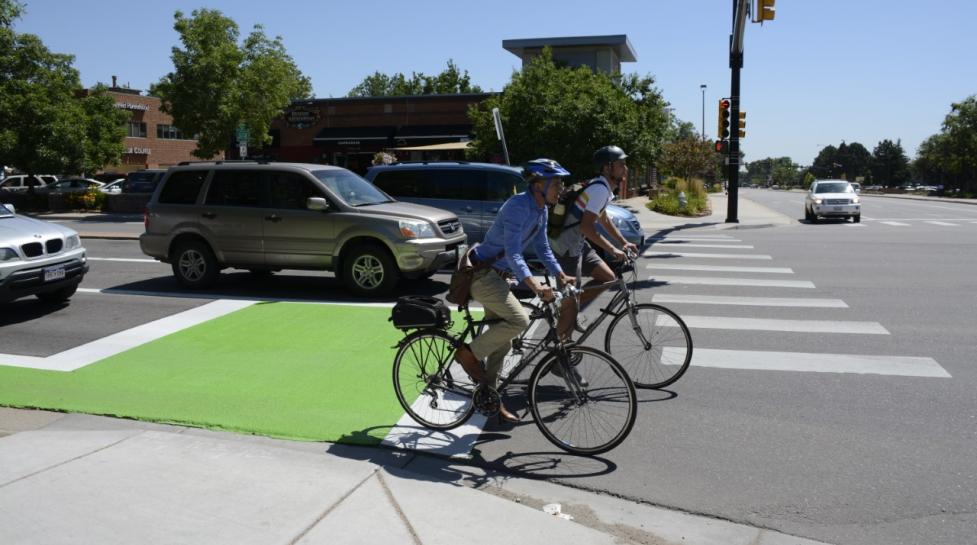The State of Colorado recently passed legislation to legalize the Safety Stop across the state.
The Safety Stop gives people on bicycles and other low-speed mobility devices, such as scooters, the legal option to ride slowly through stop signs without stopping first, as long as they are yielding right of way to pedestrians and other road users who have the right-of-way. Bicyclists and users of low-speed devices may also proceed at red lights after coming to a complete stop, if there is no oncoming traffic.

Bicyclists and other users of low-speed mobility devices can approach intersections at a reasonable speed and choose to apply the Safety Stop or continue to perform a traditional stop at both stop signs and red lights. Only bicyclists ages 15 and over may perform the Safety Stop. Younger riders may do so when they are with a parent or legal guardian.
Keep these additional rules in mind:
- The Safety Stop is only allowed for bicyclists or scooter riders if there aren’t any traffic signs or signals at the intersection specific to biking or scooting.
- Bicyclists and scooter riders must travel through the intersection at no more than 10 miles per hour without putting their foot down if they have right of way in the intersection.
- Proceed straight or turn right on a red light only after coming to a complete stop and yielding to crossing pedestrians and immediate oncoming traffic.
- Only turn left on red lights if proceeding on to a one-way street.
How to do a Safety Stop:
- Slow down as you approach the intersection.
- Make sure you have the right of way and yield to any oncoming traffic.
- Once the intersection is clear, proceed across the intersection.
